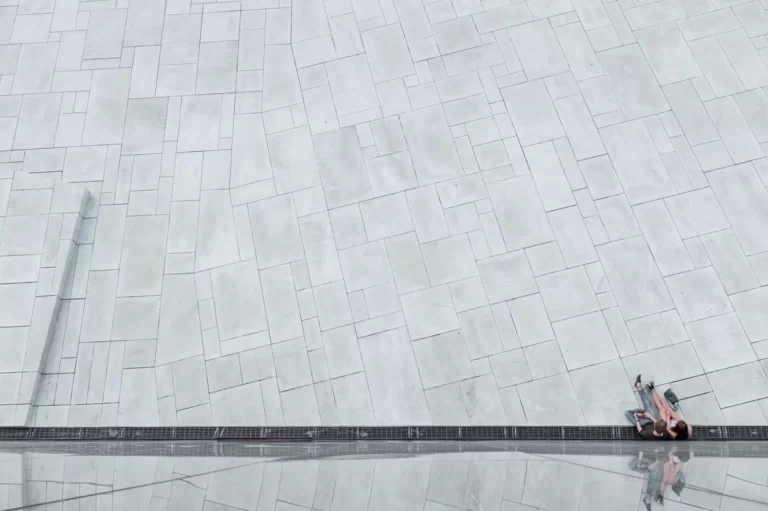Give Your Feet a Break: The Surprisingly Comfortable Benefits of Flat Insoles
What are Flat Insoles?
Flat insoles, as the name suggests, are insoles with a flat and even base, lacking any kind of arch support. Unlike contoured or arched insoles that are molded to fit the various curves of the foot, flat insoles offer a consistent flat surface from heel to toe.
Flat insoles are designed to provide a smooth, stable platform under the foot. The lack of arch support allows the foot to rest evenly across the insole surface. This even distribution can help relieve pressure on the arches in people with conditions like plantar fasciitis or arthritis. Flat insoles are also often recommended for people with flat feet or fallen arches that struggle with traditional contoured insoles.
The material used for flat insoles can vary greatly. Low-cost flat insoles may be made from basic materials like foam or plastic. More heavy-duty options may use denser, more supportive materials like cork, leather, or graphite. High-end orthotic flat insoles are often made from advanced thermoplastics that can be heated and molded to the individual foot for a personalized fit. No matter the exact materials, the goal of flat insoles remains the same – to offer flat, even cushioning without elevated arch support.
10 Top Best Flat Insoles
Flat insoles from established brands offer quality materials and reliable comfort. Here are some top options to consider:
1.Roamingfeet ComfortMax

The ComfortMax insoles are renowned for their maximum support and shock absorption, addressing major pain points such as plantar fasciitis and general heel discomfort. They feature a wide, deep cup that supports the heel and a foam layer that cushions the foot. The sturdy build can last up to a year of constant use.
Pros: Excellent arch support, Durable, Relief for common foot issues
Cons: Some users find them hard to adjust to, Slightly pricey
2.Dr. Scholl’s Comfort and Energy Work Insoles
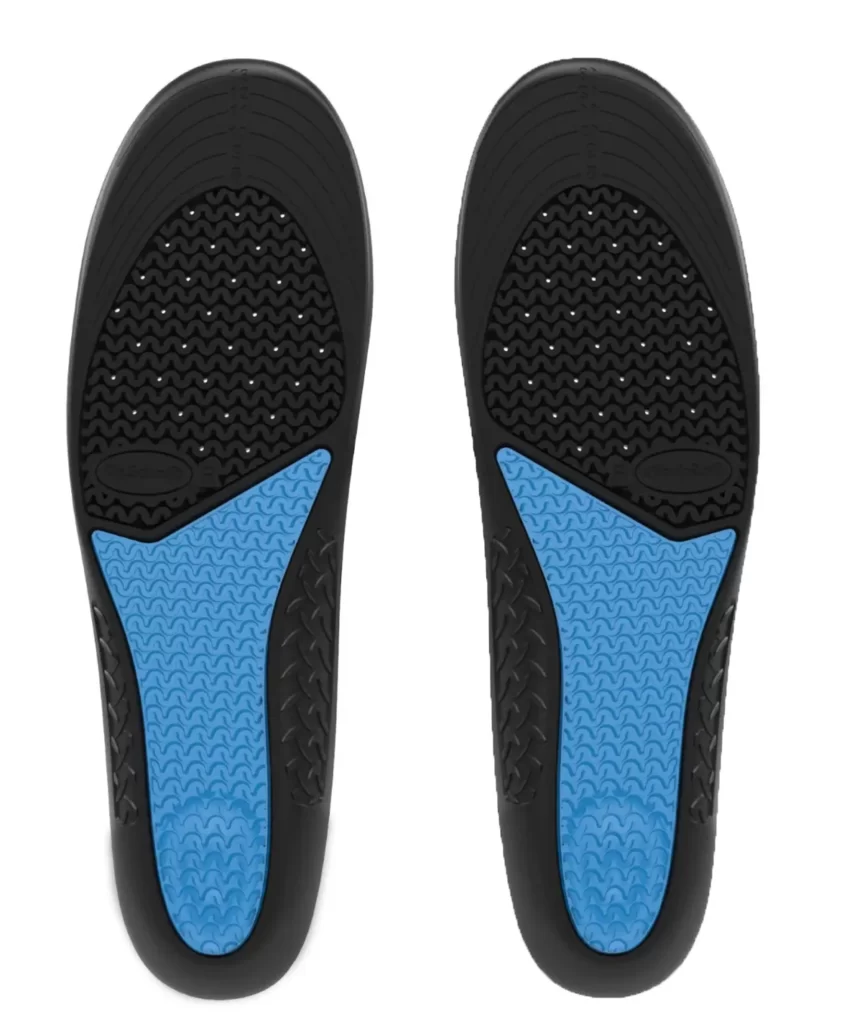
Dr. Scholl’s is a well-known brand offering specifically designed insoles for work. With a reinforced construction, they are built to handle foot stress from long hours of standing or walking. They provide good arch and heel support, reducing muscle fatigue and distributing pressure nicely.
Pros: Excellent for prolonged standing, Relieves feet and lower back pain, Affordable
Cons: Takes a while to conform to feet, Limited cushioning
3.Powerstep Original Orthotic Shoe Insoles

Powerstep’s original insoles come with dual-layer cushioning and a design that caters to various arch heights and shoes. Their semi-rigid arch support helps alleviate pain points associated with over-pronation, plantar fasciitis, and more.
Pros: Suitable for different foot issues, Fits a variety of shoes, Great arch support
Cons: Some users find them stiff, High arch support may not suit everyone
4.Spenco Polysorb Cross Trainer Insoles

Ideal for athletes who engage in a variety of activities, these insoles boast a Polysorb polyurethane foam that provides superior energy return and cushioning. They’re designed to alleviate arch and heel pain and improve alignment.
Pros: Versatile use, Excellent cushioning, Reduces foot fatigue
Cons: Not as durable as some competitors, Some users find them too thick
5.Walk-Hero Comfort and Support Insoles
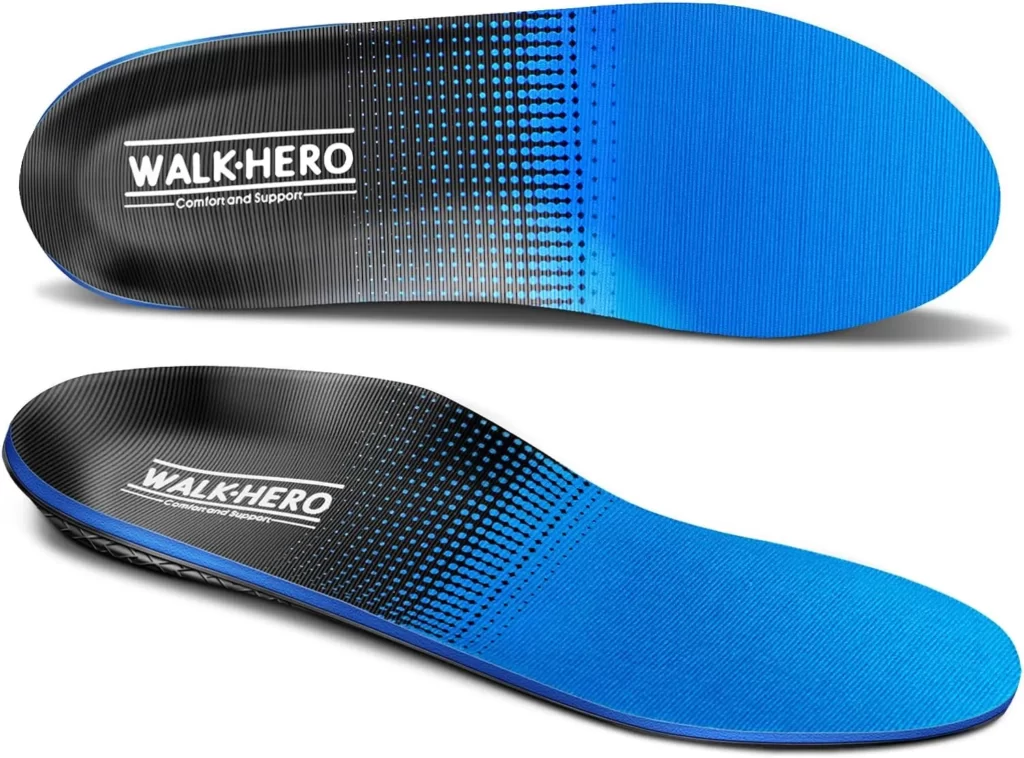
These insoles are specially designed for people with flat feet, bringing pain relief and improved comfort. Featuring a deep heel cup with built-in heel support, they’re great for reducing stress on the feet.
Pros: Affordable, Good for flat feet and plantar fasciitis, Enhanced heel support
Cons: Might need trimming to fit, Not the most breathable
6.CurrexSole RunPro Insoles

Made for runners, these insoles are designed to minimize fatigue and optimize performance. They come in three profiles to match different arch types, ensuring a personalized fit and feel.
Pros: Arch type specific options, Promotes natural foot motion, Reduces risk of injury
Cons: Slightly expensive, May take time to adapt to them
7.Samurai Insoles Instant Relief Orthotics
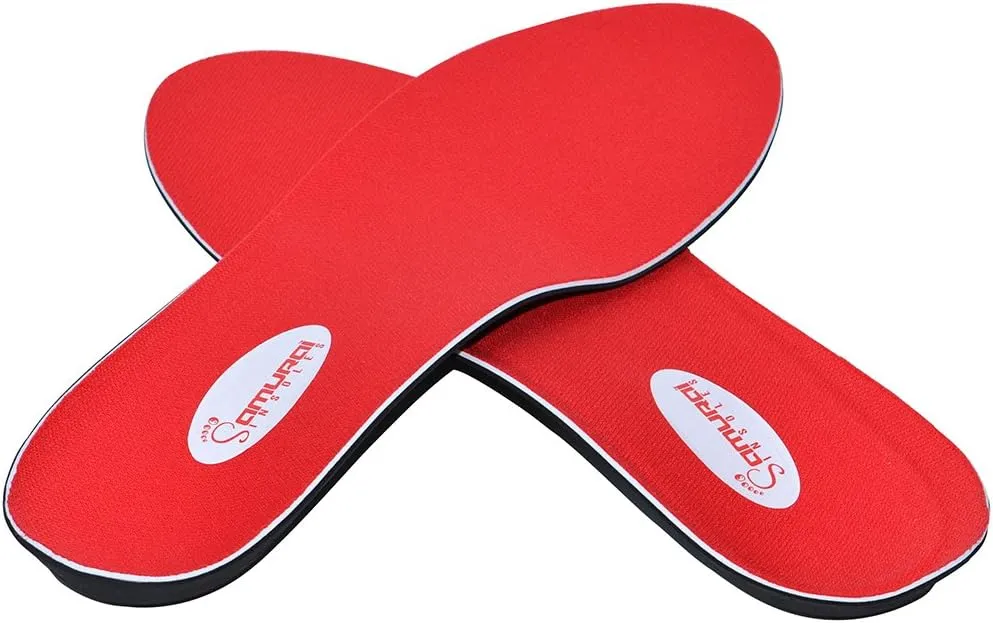
Specifically crafted for flat feet, Samurai Insoles are designed to fit seamlessly into your shoes. They provide bounce back with their moldable design that adapts to the shape of your foot.
Pros: Instant comfort, Supports all arch types, Easy to switch between shoes
Cons: Durability could be improved, Some may desire more cushion
8.Protalus M100 Max Series Insoles

These insoles stand out for their patented tri-planar technology that aligns the ankle with the rest of the body, reducing pain and improving balance. They’re especially good for those who experience discomfort beyond the feet.
Pros: Whole-body alignment, Exceptional comfort, Good for various conditions
Cons: High price tag, Could be bulky in snug-fitting shoes
9.SOLE Active Medium Insoles

SOLE’s Active Medium insoles offer an excellent balance of support and cushion, making them versatile for various activities. They feature a heat-moldable footbed for a custom fit.
Pros: Customizable fit, Environmentally friendly materials, Good support and cushioning
Cons: Heat molding process may be inconvenient, Higher price point
10.Timberland PRO Anti-Fatigue Technology Insoles
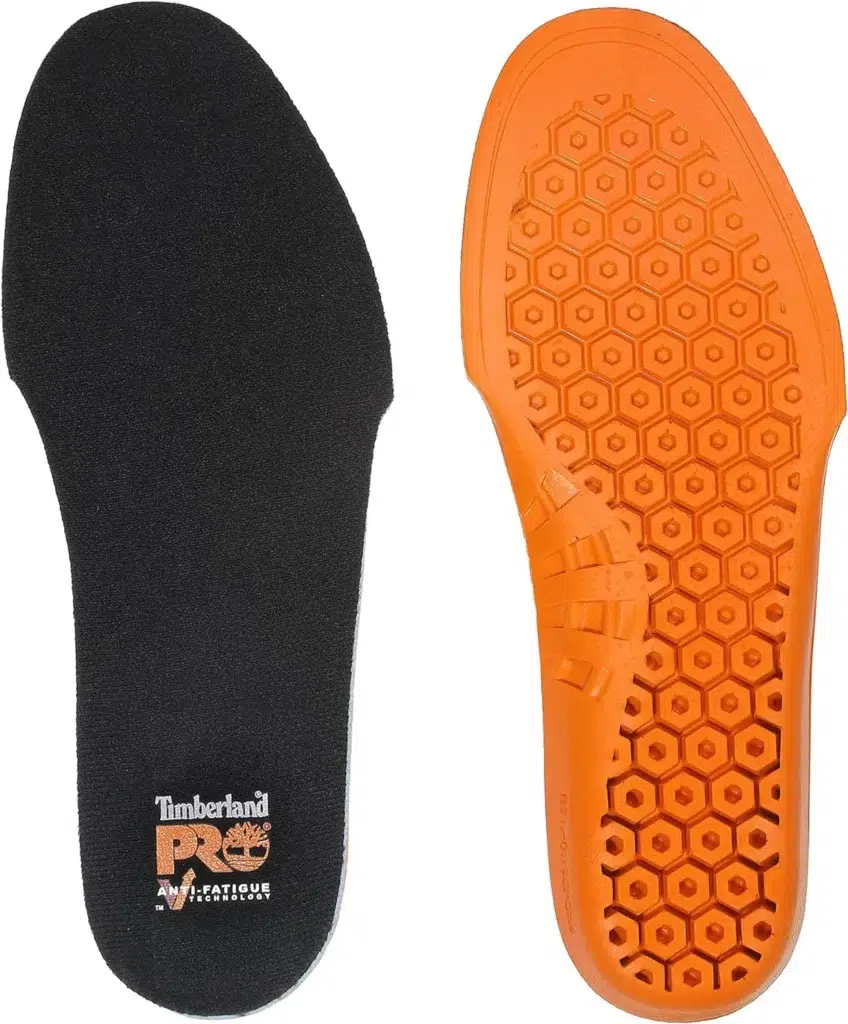
Timberland PRO insoles use unique anti-fatigue technology to provide maximum support and shock absorption for long days on your feet. They’re a great choice for work boots.
Pros: Excellent for work environments, High-end shock absorption, Durable
Cons: May feel bulky in non-work footwear, Pricey for insoles
Benefits of Wearing Flat Insoles
Flat insoles can provide a range of benefits for your feet by adding a layer of cushioning and support right inside your shoes. Here are some of the top reasons to consider wearing flat insoles:
– Cushioning and Shock Absorption – Flat insoles create a padded surface that can absorb impact as you walk, run or stand. This helps prevent jarring or uncomfortable pounding on your feet. The cushioning protects your heels, arches and metatarsals from some of the force they experience.
– Improve Overall Foot Alignment – Flat insoles can help position your foot properly inside the shoe. If you overpronate or underpronate, an insole can improve the alignment of your foot and ankle. This protects other parts of your body from strain or improper gait mechanics.
– Distribute Weight Evenly – A quality insole distributes your body weight evenly across your feet. This prevents specific areas like the ball of the foot or heel from bearing too much force. The insoles cushion the pressure to reduce pain in metatarsals and other sensitive areas.
– Relieve Pressure on Arches – Those with flat feet or fallen arches are prone to arch pain and strain. Flat insoles provide a surface that supports the arch area to limit this pressure. The insoles help maintain the arch shape instead of letting it over-flatten inside shoes.
Potential Drawbacks of Flat Insoles
While flat insoles can provide comfort and cushioning, they do come with some potential drawbacks to be aware of:
– May not provide optimal arch support – Unlike contoured or arch support insoles, flat insoles don’t mold to the arches of your feet or provide customized arch support. For those with high arches or fallen arches, flat insoles may not give adequate support.
– Can put extra pressure on outside of feet – With no contouring for the arches, flat insoles can cause more pressure to build up on the outer edges of the feet. This can lead to pain or discomfort over time for some wearers.
– Not ideal for conditions like plantar fasciitis or heel pain – Contoured insoles are generally better suited for certain foot pain conditions or pronation issues. The lack of arch support from flat insoles may not relieve plantar fasciitis or heel spurs in the way a more supportive insole would.
So flat insoles aren’t the best choice for all foot types and conditions. Consult a podiatrist if you have specific foot pain or structural issues to help determine the right insole design for your needs. Those with neutral or high arches may want to opt for insoles with more contouring and arch support.
Who Should Consider Flat Insoles?
Flat insoles can be a good option for certain individuals, while arch support insoles may be better for others. Here are some key groups of people who may want to consider using flat insoles:
– People with high arches who need less arch support. Those with high arches often do not need extra arch support that contoured or orthotic insoles provide. The higher their arches are, the less collapsing happens when they step. Flat insoles work well to provide cushioning without altering the arch.
– Those with foot pain on the outsides of their feet. If the outer edges of the feet hurt rather than the arches, flat insoles can help by distributing pressure evenly across the bottom of the feet. They prevent extra pressure on the outer feet compared to arch support insoles.
– Athletes looking for shock absorption without arch support. Some athletes prefer flat insoles because they allow the foot to move and flex naturally during activity or training. The insoles cushion without restricting movement like contoured or orthotic options may. They absorb shock evenly across the feet.
Selecting the Right Flat Insoles
When choosing flat insoles, there are a few key factors to consider for optimal comfort and fit:
– Material: Select a material based on your needs. For example, choose an absorbing and cushioning material like gel or foam if you need extra shock absorption. Opt for an antimicrobial, moisture-wicking material if odor control is a priority. Those with sensitive skin may prefer a smooth, non-irritating material like leather or plastic.
– Thickness: The thickness of the insole will impact how it fits in your existing shoes. Thinner insoles around 1-3mm are ideal if you have a tight-fitting shoe and want a minimal lift. Insoles 5-7mm thick add more cushioning but take up more space in the shoe. Anything above 7mm starts to get bulky.
– Sizing: Size the insoles accurately to ensure the edges line up with your toes at the front and heels at the back. Measure your feet and size up if you fall between sizes. The insoles should not slide around in your shoe or have extra space around the edges when walking.
Getting the right fit and features is key to getting the full benefits from flat insoles. Take the time to evaluate your needs and accurately measure your feet before selecting the perfect pair. This will allow the insoles to provide comfort and support right where you need it.
Inserting and Using Flat Insoles
Properly inserting and using your new flat insoles is important to get the most benefit. Here are some tips:
– If your shoes already have a removable insole, take it out before inserting the flat insole. Most shoes are not designed to layer two insoles, which can make the fit too tight.
– Check that the flat insole properly fits the shoe before wearing. It should lay flat from toe to heel with no bunching or overlapping. If it seems too small, size up on your next pair of shoes to accommodate the insole insert.
– When first using the flat insoles, wear them for short periods to allow your feet to adjust. Gradually increase wear time as they become more comfortable. Wear them consistently each time you wear that shoe.
– Consider bringing the flat insoles with you when trying on new shoes. Insert them to check the fit before purchasing shoes to wear with the insoles.
– Replace the flat insoles every 6-12 months or sooner if they become overly compressed or worn. Old insoles lose their cushioning and support.
Following these tips will help the flat insoles fit and function properly to support your feet comfortably. Check the fit whenever you get new shoes to make sure your inserts work with the new footwear. Let your feet get used to the different support gradually.
Caring for Flat Insoles
Properly caring for your flat insoles will help extend their lifespan and effectiveness. Here are some tips:
– Remove and allow to air out regularly – Take the insoles out of your shoes and let them air out for several hours after each wear. This prevents moisture buildup that can lead to odor and reduce the insoles’ support.
– Clean gently with soap and water – Occasionally clean your insoles with a small amount of mild soap and warm water. Rinse thoroughly and air dry completely before replacing in your shoes. Avoid putting insoles in the washing machine or dryer.
– Replace every 6-12 months depending on wear – The cushioning and support of insoles gradually wears down with extended use. Plan on replacing your insoles every 6-12 months depending on how heavily they are worn. Signs it’s time for new insoles include: reduced support, compressed or misshapen cushioning, and excessive odor.
Proper care will help flat insoles maintain their comfort and effectiveness. Let them air out between wears, clean periodically with soap and water, and replace them at least annually or sooner if excessively worn. With some simple maintenance, flat insoles can provide many months of happy walking and standing.
DIY Flat Insoles
Making your own custom insoles at home can be an easy and affordable option. Here are some ideas for DIY flat insoles:
– Felt – Purchase sheets of wool felt and cut to the shape of your shoe insert. Felt is cushioning and can help evenly distribute pressure in the shoe. Use double-sided tape or fabric glue to adhere the felt insole to your existing shoe insert.
– Gel pads – Gel pad insoles are inexpensive and can be found at pharmacies or department stores. Buy pads that are slightly larger than your insert, then use scissors to trim down to size and shape. The gel provides gentle, shock-absorbing cushioning.
– Metatarsal pads – Relieve pain in the ball of your foot by adding metatarsal pads. Purchase adhesive pads from a pharmacy, or cut a doughnut hole shape out of felt to make your own. Position the pad behind the ball of your foot for maximum comfort.
– Moleskin/molefoam – This soft, felt-like material cushions sensitive areas. Cut pieces to size and stick them directly onto irritated spots, like the heel or balls of feet. Moleskin self-adheres to add padded relief precisely where needed.
The benefit of DIY insoles is the ability to customize for your unique foot issues. Experiment with materials and padding placements until you find what works best. Always use caution and ask a podiatrist if pain persists. With some homemade customization, flat insoles can provide comfort in any shoe.
When to Ask a Podiatrist About Insoles
In most cases, using over-the-counter flat insoles is harmless and can provide relief from minor foot, knee, leg or back discomfort. However, there are some instances when it’s important to consult a podiatrist before using any kind of insole, including flat ones.
You should make an appointment with a podiatrist if you have:
– Moderate to severe foot, knee, hip or back pain – Intense or ongoing pain in these areas, especially pain that persists even after rest, indicates a potentially serious underlying condition. A podiatrist can properly evaluate and diagnose the cause of the pain. They can recommend orthotics if appropriate or refer you to other specialists for treatment.
– History of injuries or surgeries on lower extremities – If you’ve previously had injuries, fractures, sprains or surgery on your feet, ankles, legs or knees, a podiatrist should evaluate your feet before using any insole. They need to ensure the insoles will not aggravate or worsen problems with alignment, gait or healing.
– Diabetes or circulation issues – People with diabetic neuropathy or peripheral artery disease that affects circulation in the legs and feet must be very careful about cushioning and support for their feet. A podiatrist can assess sensation and blood flow and determine if flat insoles are appropriate or if custom orthotics are needed.
It’s always wise to err on the side of caution and see a podiatrist first before using any kind of insole if you have significant foot/leg problems or systemic conditions affecting the lower extremities. A podiatrist can help ensure insoles provide comfort and healing benefits rather than unintended harm.
Last Thought
When selecting the right flat insole brand, consider factors like support, cushioning, fit, comfort, and intended use. It’s often worth trying different brands and styles to determine the optimal flat insole. Consulting a podiatrist can also help guide the best choice for your individual foot needs.



